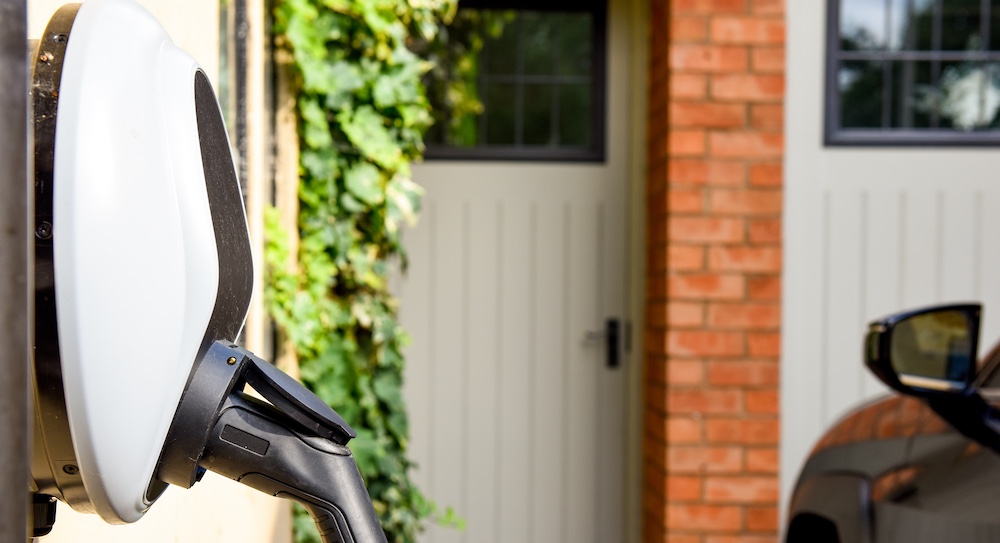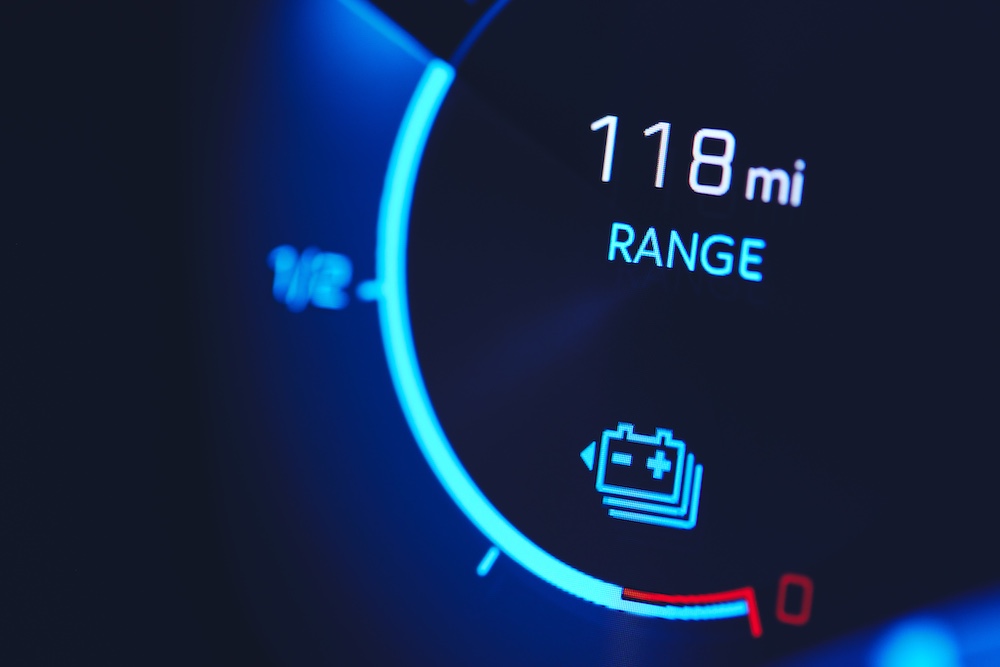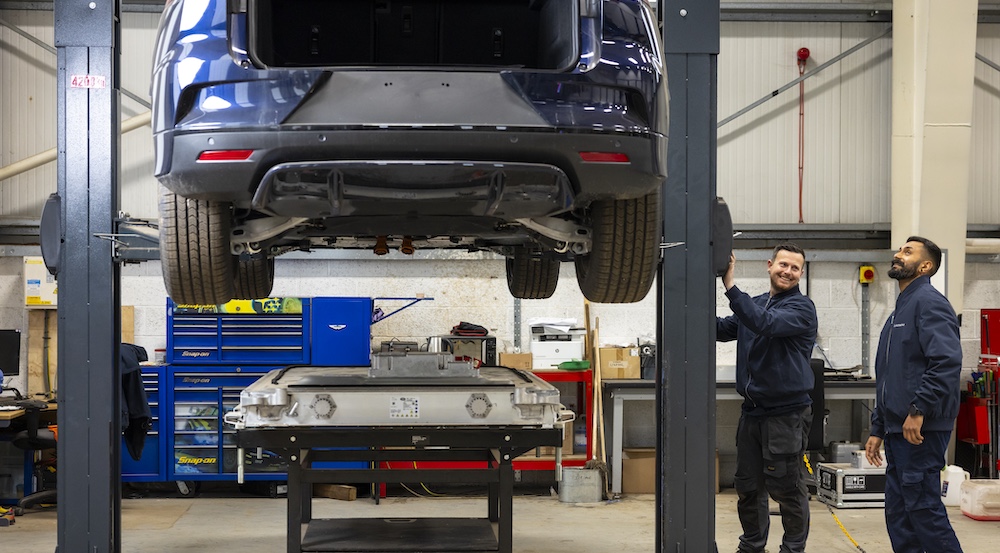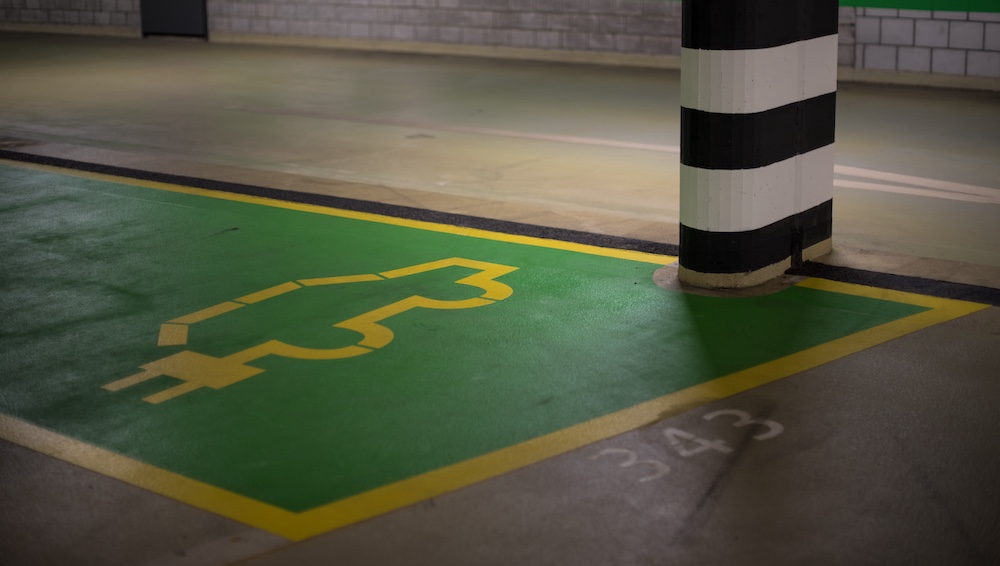Home EV charging: How to charge your EV safely and efficiently
If you have recently bought or are thinking about buying an electric vehicle (EV), you’re likely to have questions about the costs and practicalities of home EV charging.
Charging an EV at home is an extremely popular method of powering the battery, and our research shows that 87% of EV owners have a home charge point. And rightly so, as using a home charge point is the most convenient and cost-effective way of powering an electric vehicle.
This guide covers everything you need to know about charging your EV at home. From types of EV chargers to installing a home charge point, find out how you can make the most of the efficiency of at-home EV charging.
What is home EV charging and how does it work?
Home EV charging uses the energy that powers your home to charge your electric vehicle. Usually, this involves installing a home charge point in your driveway or garage, which you plug into your vehicle when it’s not in use.
Previously, it’s only been possible to install a domestic EV charging point if you have access to off-street parking at your home. Recently, however, many local authorities have begun to trial the installation of pavement ‘gullies’ or permanent under-pavement cables which allow EV drivers who use on-street parking to charge their vehicles at home too.
Types of EV chargers for your home
There are multiple types of EV chargers available for at-home charging, which offer convenient plug-in solutions.
Three-pin plug chargers
It is technically possible to use a domestic, three-pin plug socket to charge your EV at home. However, it’s not recommended for regular day-to-day charging due to the lack of built-in safety features. Three-pin chargers are also much slower than dedicated wall boxes, delivering a maximum of 2.4kW and taking over 24 hours to charge a 60kwH EV battery.
It can be worth carrying a three-pin charging cable in the boot of your vehicle for emergency use or overnight visits to friends and family. But for regular use, it’s best to install a dedicated home charge point.
EV wall box chargers
Home charge points (or wall boxes) are installed by a professional electrician, usually on your driveway or in your parking garage. These dedicated EV chargers offer more safety features than a three-pin plug cable (such as auto-shut off), as well as smart home energy management, which can make charging an EV at home even cheaper.
Home charge points also generally offer greater charging efficiency than three-pin plugs. Most wall boxes provide a 7kW output, which can fully charge an EV in 6-10 hours, depending on the size of your battery. Some can even provide 22kW, but these require your home to have three-phase power, which is rare. Plus, the majority of EVs aren’t compatible with such powerful chargers.
Tethered vs untethered chargers: What’s the difference?
If you choose to install an EV charger at home, you’ll have the option of a tethered or untethered charge point. A tethered charger comes with a cable attached, whereas an untethered charger does not. Choosing between a tethered and untethered charger is largely down to personal preference, but there are a few things to consider when making your decision.
A tethered charger can be seen as more convenient as it eliminates the need to store a separate charging cable in your boot or home. But, as the cable can’t be detached, it can also be more difficult to store the charger neatly between home EV charging sessions. Installing a tethered charger also means that, should EV charging ports change in the future (which is unlikely, but always a possibility), you will need to install a new home charge point.
On the other hand, untethered chargers for home EV charging can look neater and more compact when not in use and are easier to update with a new charging cable if necessary. However, you will need a space to store the cable – either in your car or in your home – between charges.
How to install an EV charger at home
Step 1: Check your home’s suitability and electrical capacity
The first step to installing an EV charger at home is to assess the suitability of your property as well as your home’s power supply. Ideally, you’ll have a convenient location to install your EV charger that’s close to where you park and within range of your home's WiFi to benefit from smart charging features.
The vast majority of homes in the UK have single-phase power, which allows a maximum charge rate of 7.4kW . That means that, even if your EV has capacity for 11kW, it won’t be able to charge any faster than 7.4kW.
A small number of homes have three-phase power, allowing a maximum charge rate of 22kW. Upgrading to three-phase power for a faster rate can be expensive, so it’s a good idea to check your EV’s documentation first to be sure that it has the necessary capacity before making any decisions.
Step 2: Choose an OZEV-approved installer
The Office for Zero Emission Vehicles (OZEV) has a list of approved home charge point installers that you should choose from.
Using an OZEV-approved installer ensures that your installation is safe and compliant, and means that you’re likely to be eligible for government grants to help towards the installation cost.
Find an OZEV-approved installer near you here.
Step 3: Apply for available grants or local schemes
Once you have chosen an installer, you should contact them directly for a quote. They’ll then be able to start your claim for an EV chargepoint grant, which can cover up to £350 towards the cost of installing an EV charger at home.
You can also check your local council’s website to see if you’re eligible for any local EV schemes and incentives.
Step 4: Installation & EV charger safety checks
If your EV chargepoint grant claim is approved, your installer should begin work within 90 days. If this isn’t possible, the installer can either apply for an extension or start a new claim. Once your installation is complete, your installer will carry out the necessary EV charger safety checks to ensure compliance.
Once the work is complete, your installer will claim your EV chargepoint grant on your behalf and apply it to your overall installation cost.
Charging an EV at home: Best practices for safety and savings
Once your home EV charge point has been installed, there are further steps you can take to maximise home EV charging savings and safety.
Off-peak charging
If your energy tariff provides off-peak rates when demand on the grid is lowest, you may be able to take advantage of cheaper charging at certain times of day. These off-peak charging rates typically apply overnight, allowing you to charge your EV for less and have a fully charged battery ready for the next day.
Smart charging
If your home EV charger is a smart charger, you can benefit from additional smart home energy management features that help you charge your EV at home more cost-effectively. Smart chargers can communicate with devices in your home, such as your phone and smart meter (if you have one), as well as the grid, to charge your EV according to your preferences.
Not only is this a more convenient and cost-effective way of charging an EV at home, but smart charging can also help to stabilise the grid by more accurately managing supply and demand.
Safe EV charging at home
It’s important to follow best practices to help ensure safety when charging an EV at home. Installing a dedicated home EV charge point rather than relying on three-pin sockets and extension leads is the best way to maximise safety, as it reduces the risk of the charger overheating.
It’s also essential to regularly inspect all charging equipment, including cables and plugs, for any sign of damage and to replace components that show evidence of wear and tear.
How to save money with smart home EV charging
You can combine a smart EV charger with a specific EV energy tariff to make further savings on charging an EV at home.
Some EV tariffs offer reduced rates for home EV charging, allowing you to top up your battery for less than your normal electricity rate. Others provide a reduced rate for all electricity use at off-peak hours (usually overnight), allowing you to charge your EV for less when demand is lower.
By combining an EV energy tariff with a smart EV charger, you can schedule off-peak charging, allowing your vehicle to charge automatically when energy rates are lowest. If you have solar panels and a compatible smart EV charger, you may be able to take advantage of further home energy management by prioritising solar energy to charge your EV and minimise your reliance on the grid.
Overall, choosing a smart charger and EV energy tariff can help to reduce the cost of EV charging at home with minimal manual input.
Conclusion: Charging an EV at home
Home EV charging is the most convenient and cost-effective way to power your electric vehicle, and is used by almost 90% of EV drivers.
If you don’t already have an EV charge point fitted at your property, using an OZEV-installer makes the process straightforward and gives you the peace of mind that your charger is safe and compliant. Plus, you can benefit from government grants that reduce the installation cost.
Once your EV charge point is installed, smart charging and dedicated EV tariffs allow you to take advantage of off-peak rates and renewable energy to further reduce the cost as well as the environmental impact of home EV charging.
For more advice on owning an electric vehicle, including EV charging costs and available grants, browse the guidance available on the EV Hub.
FAQs: Your home EV charging questions answered
How much does it cost to install an EV charger at home?
Depending on the model and installer, a home EV charger can cost £800 to £1,500. However, this upfront cost can be reduced by applying for an EV chargepoint grant.
Is it safe to charge my EV overnight?
Yes, charging an EV at home overnight is safe. If you use a smart charger, you can schedule charging to stop at a specific time or when your battery reaches the desired level, providing additional peace of mind.
Can I charge my EV using a regular plug?
It is possible to charge an EV using a standard, three-pin plug, but it’s not recommended as a regular charging method due to the increased safety risks. Instead, you can have a dedicated wall box fitted by an OZEV-approved installer.
Do I need permission to install an EV charger at home?
If you own your home and live in a property with off-street parking, it’s unlikely that you’ll need permission to install an EV charger. If you’re a tenant living in rented accommodation, you’ll need written permission from your landlord.
What’s the difference between a smart charger and a standard charger?
A standard EV charger charges your vehicle’s battery for the entire time it’s plugged in and does not allow any remote control, similar to your phone charger. A smart charger has additional features, allowing you to schedule charging between specific hours or automatically charge your vehicle when energy rates are lowest, usually from your mobile phone.








